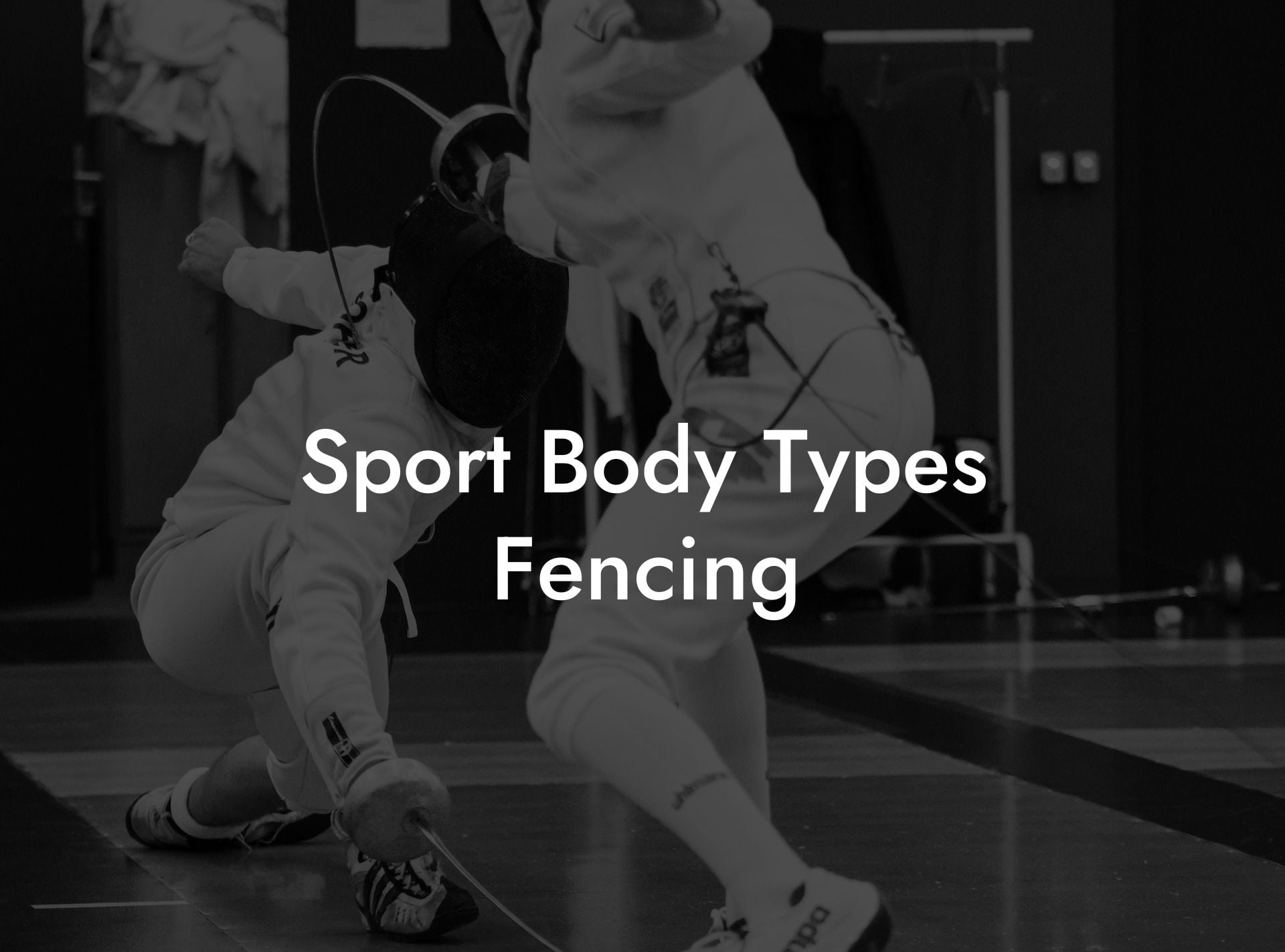Are you curious about how different body types influence performance in the exciting sport of fencing? As an individual discipline with various required physical skills, understanding the role of body types can help you enhance your abilities and passion for fencing. Join us as we dive into the world of sport body types in fencing and learn how you can grow as a fencer regardless of your physical shape.
Sport Body Types Fencing Table of Contents
The Three Main Body Types
Ectomorph
Ectomorphs are characterized by a slender, lean body with long limbs. They typically have a higher metabolism and find it more challenging to gain muscle mass.
Pros:
- Quick reflexes and agile movements
- Ability to cover distance quickly with long limbs
- High stamina
Cons:
- Difficulty in building muscle mass
- Lower overall strength
Mesomorph
Mesomorphs possess a more muscular physique and a natural athletic build. They have a medium bone structure and are able to gain and retain muscle mass more easily than ectomorphs.
Pros:
- Well-rounded athletic abilities
- Ease in building muscle mass and strength
- Higher power and explosiveness
Cons:
- Slower reflexes and agility compared to ectomorphs
- Potentially less stamina for longer bouts
Endomorph
Endomorphs have a larger body structure and tend to store more body fat. They have a slower metabolism and may find it challenging to lose weight but can still develop muscle strength.
Pros:
- Strong base and stability
- Powerful lunges and fast advances
Cons:
- Slower reflexes and agility
- Lower overall stamina and endurance
Understanding the Importance of Body Types in Fencing
Each body type has its unique strengths and weaknesses, and a fencer must focus on balancing their physical characteristics to be successful. Knowing your body type will help you identify areas you need to work on, and can be used as an advantage.
Strength and Conditioning for Different Body Types
Regardless of your body type, a comprehensive strength and conditioning program tailored to your individual needs is crucial in maximizing your physical potential and reducing the risk of injuries.
- Ectomorphs should focus on strength training and muscle-building exercises to improve overall strength and power
- Mesomorphs can benefit from a well-rounded training program that combines strength, agility, and endurance exercises
- Endomorphs should prioritize endurance training and cardiovascular exercises to improve stamina and control body weight
Sport Body Types Fencing Example:
Imagine a mesomorph fencer with naturally strong and powerful movements. To accentuate their strengths, they will engage in a training regimen focused on strength, power, and explosiveness, such as plyometric exercises and weight training. However, to emphasize agility and speed, they should also dedicate time to interval training, footwork drills, and flexibility exercises.
Now that you understand the impact of different body types in fencing, you can leverage your unique attributes to excel in this fast-paced and dynamic sport. Don't forget to tailor your training regimen to fit your body type and focus on improving areas that need attention. As you progress in your fencing journey, continue to explore the wealth of knowledge and resources available on the Anchorage Fencing Club blog. We hope this article has provided you with valuable insights, and we encourage you to share it with your fellow fencers and fencing enthusiasts!













